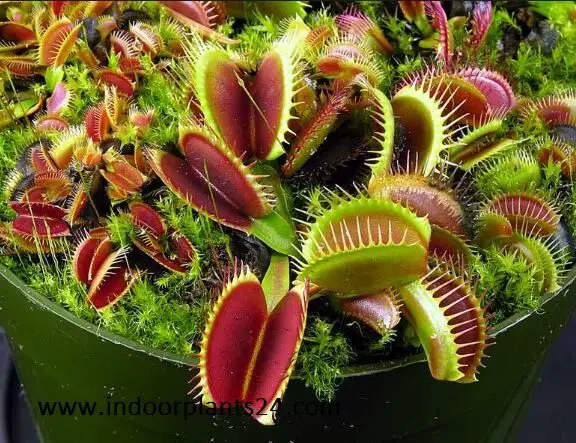Carnivorous plants generally come from areas where their roots are unable to obtain enough nutrients from the soil, so they have developed a way of absorbing nutrients from animals, live or dead. Plants such as dionaea feed on small insects by trapping them and then digesting the contents of their bodies.
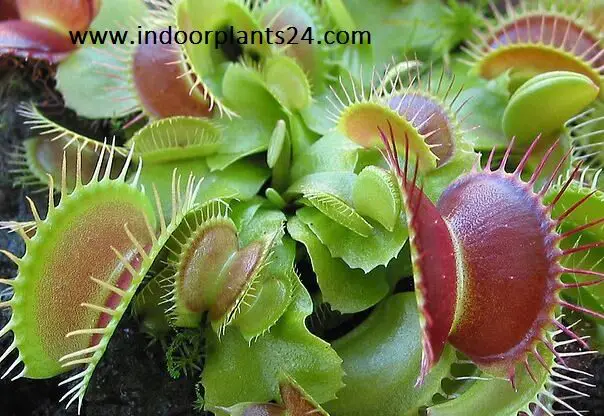
Venus’s-flytrap—the only species in this genus—is arguably the most interesting insect-eater, not for its appearance, but more for its action. It is a perennial with rosettes of heart-shaped leaves 3—6in/ 8-15cm long that are hinged in the middle and armed with sharp teeth. 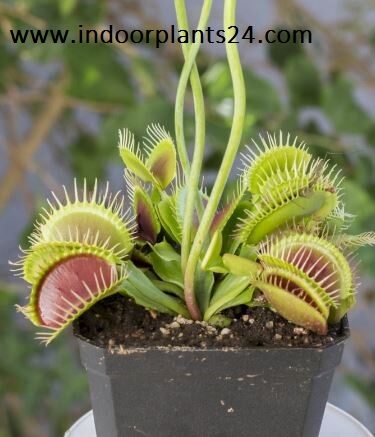 Inside the leaf are many bristles and, more important, three particular hairs that when touched trigger the leaf to close up, trapping any insect attracted by the plant’s secretions.
Inside the leaf are many bristles and, more important, three particular hairs that when touched trigger the leaf to close up, trapping any insect attracted by the plant’s secretions.
The action is immediate, and the leaves may stay shut for as long as two weeks, after which they open again and reset themselves for the next victim. In summer, clusters of white flowers, some 3/4in/2cm wide, appear on short stems. 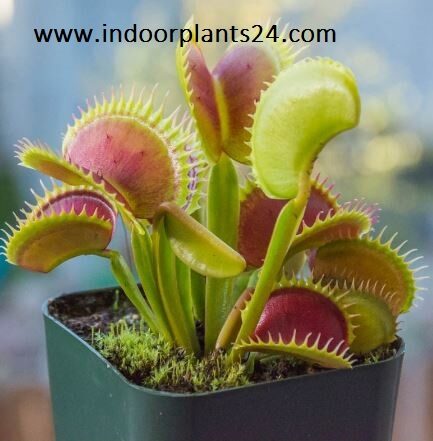 If the leaves and stems become bmp, it may mean that the plant is being kept too dry. Water it well; even then the plant may not recover.
If the leaves and stems become bmp, it may mean that the plant is being kept too dry. Water it well; even then the plant may not recover.
The plant can also make food by photosynthesis, so bugs are not critical to its survival. 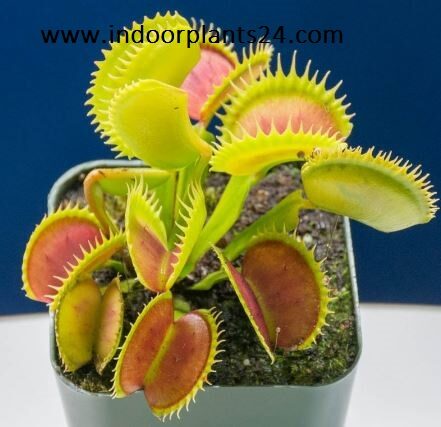 FACT FILE
FACT FILE
ORIGIN North and South Carolina.
HEIGHT 3-8in/8-20cm.
POTTING MIX Half peat moss, half sphagnum moss, or all sphagnum moss.
REPOTTING Not necessary.
PROPAGATION In spring, divide the rhizome, planting each piece separately; or sow seeds in fall, in peat moss mixed with spaghnum moss. In both instances, cover with plastic until the new plants are established.
KEEPING PLANTS Dry rooms can be fatal, so cover the plant with a plastic dome that will retain humidity. 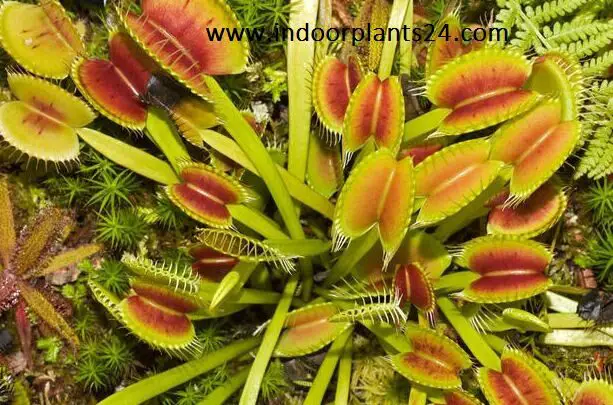 Dionaea Muscipula Droseraceae Venus Flytrap Plant PLANT CARE
Dionaea Muscipula Droseraceae Venus Flytrap Plant PLANT CARE
- Bright light with some direct sunlight.
- Minimum winter temperature of 50 F/10 C; normal room temperature at other times.
- Stand the pot in a shallow container of rainwater and keep the soil moist at all times.
- In winter cover the pot with a plastic dome and keep the soil just moist.
- From spring to fall, if there are no flies about, feed occasionally with newly swatted insects or small pieces of meat.
